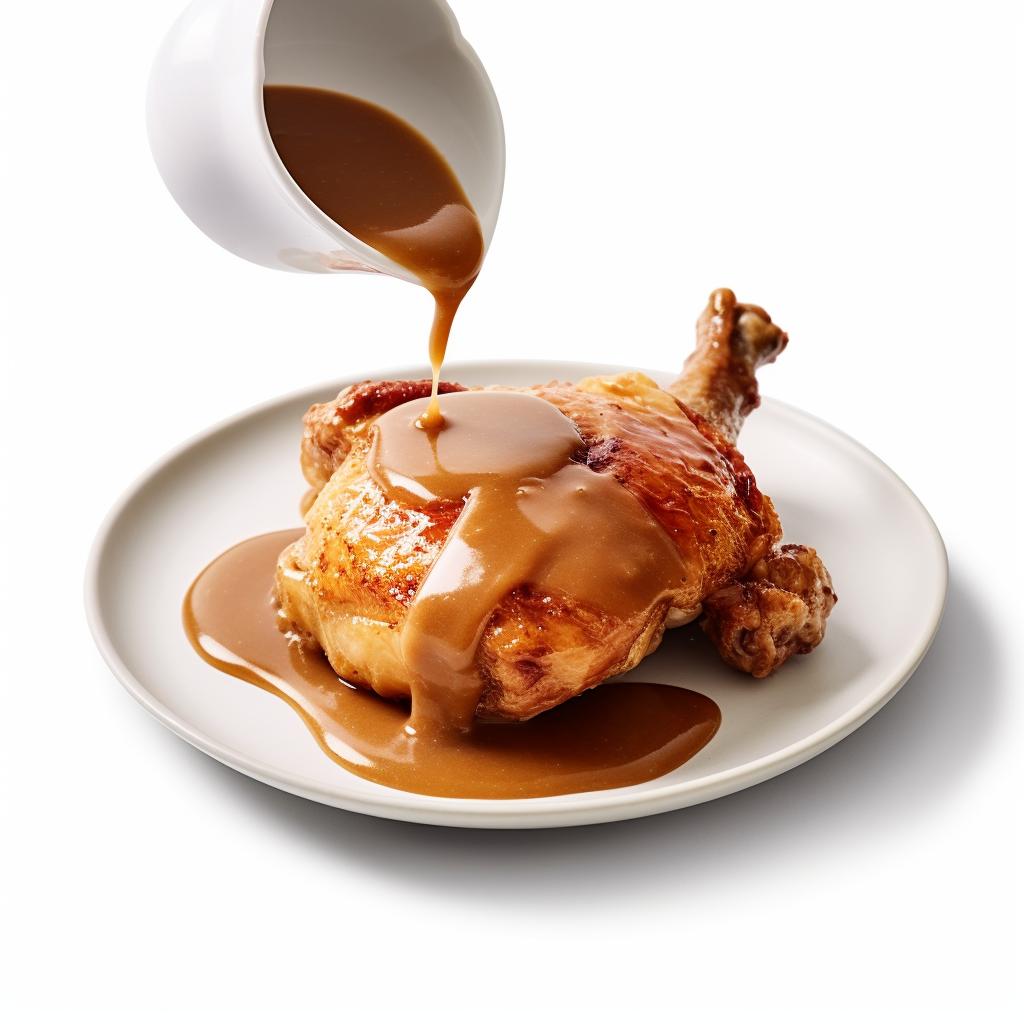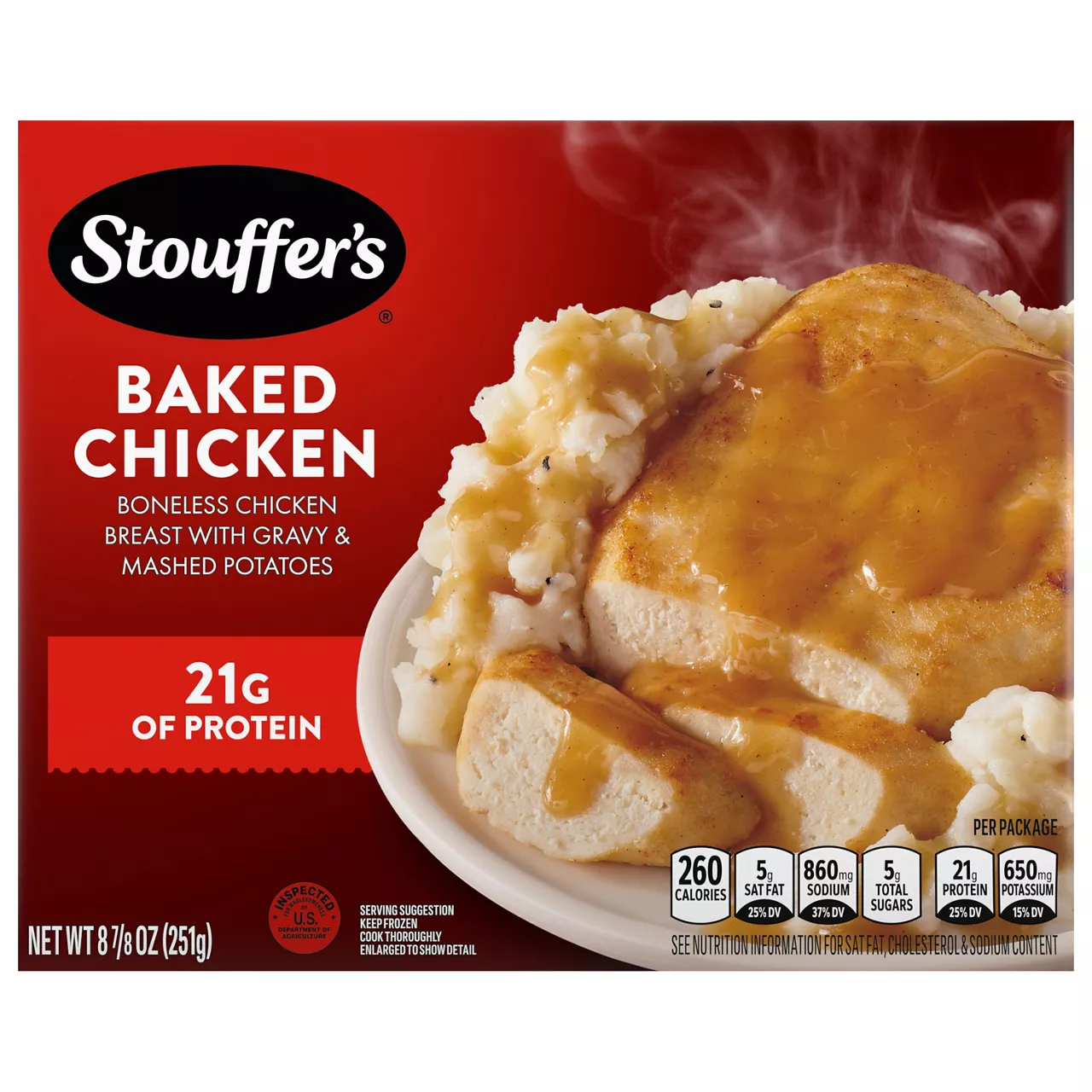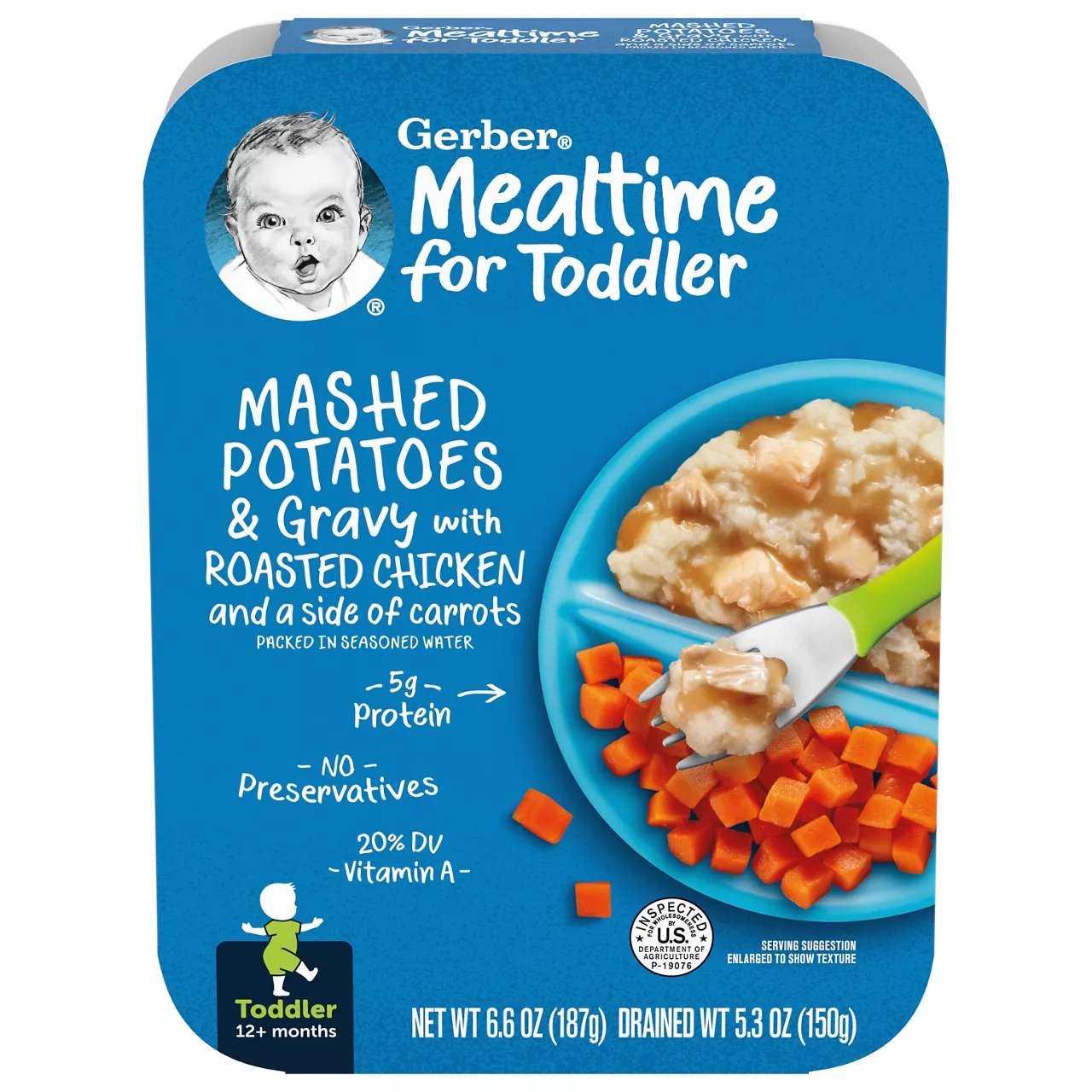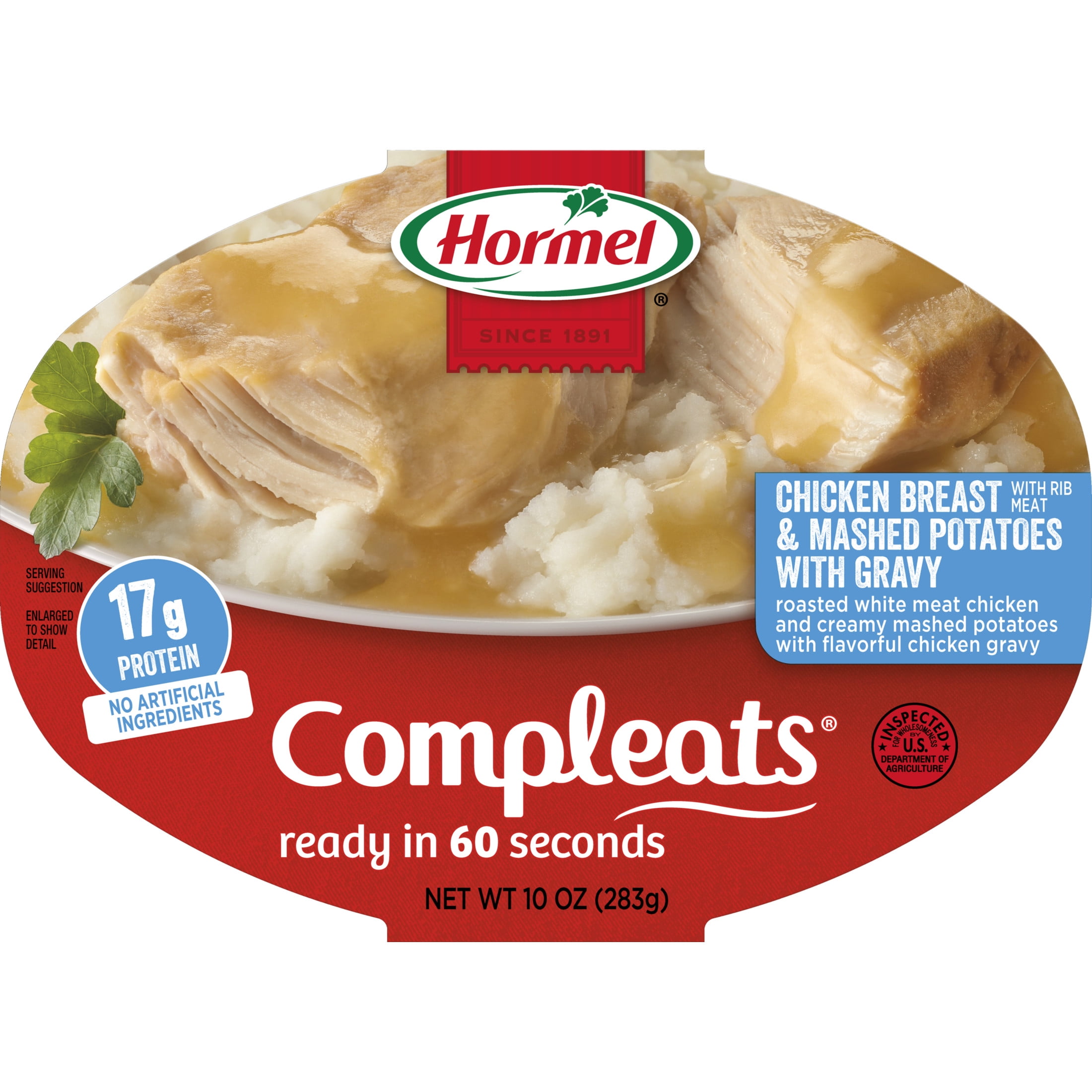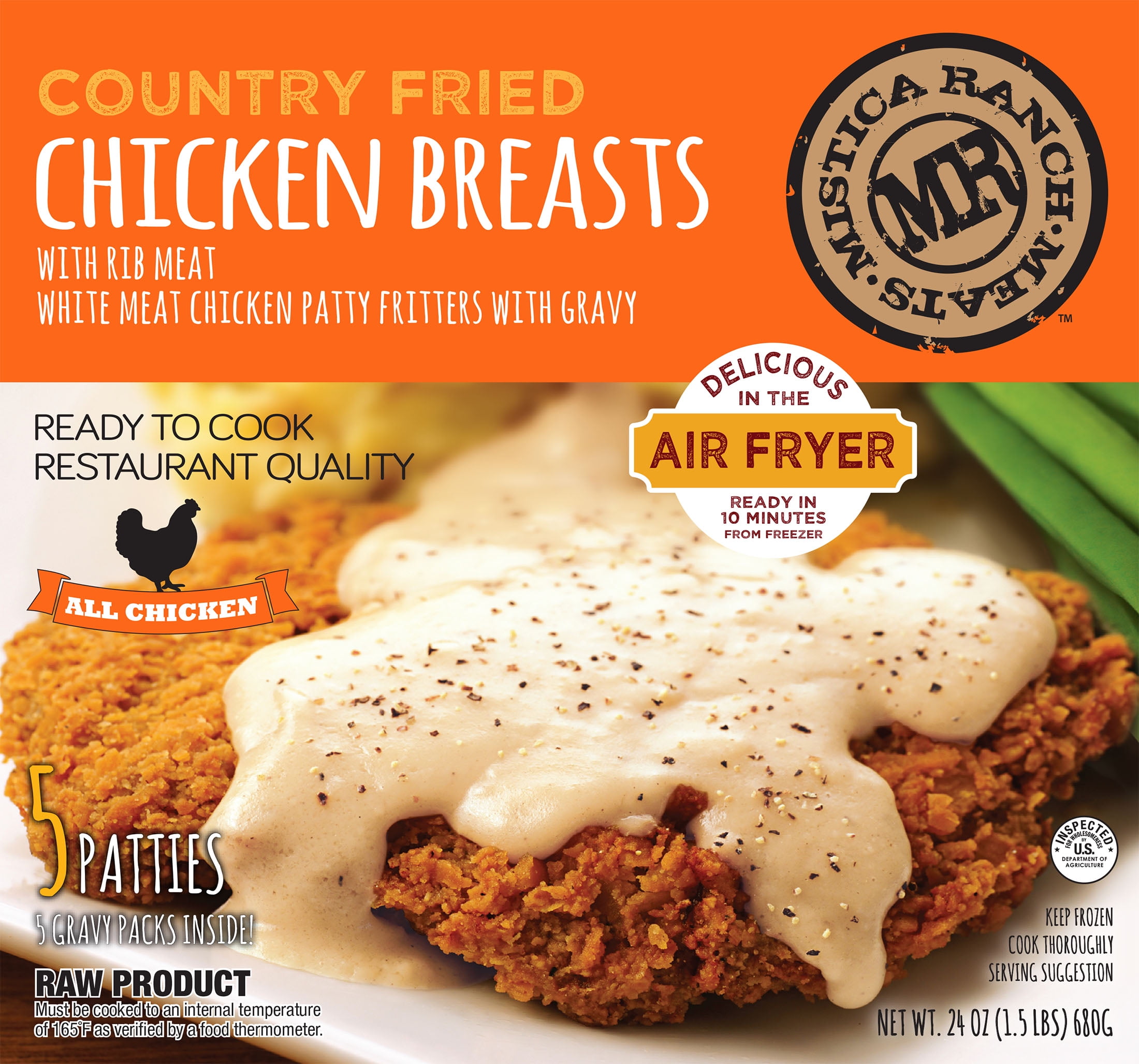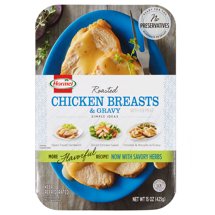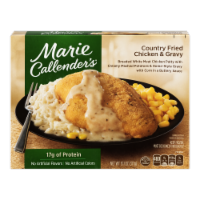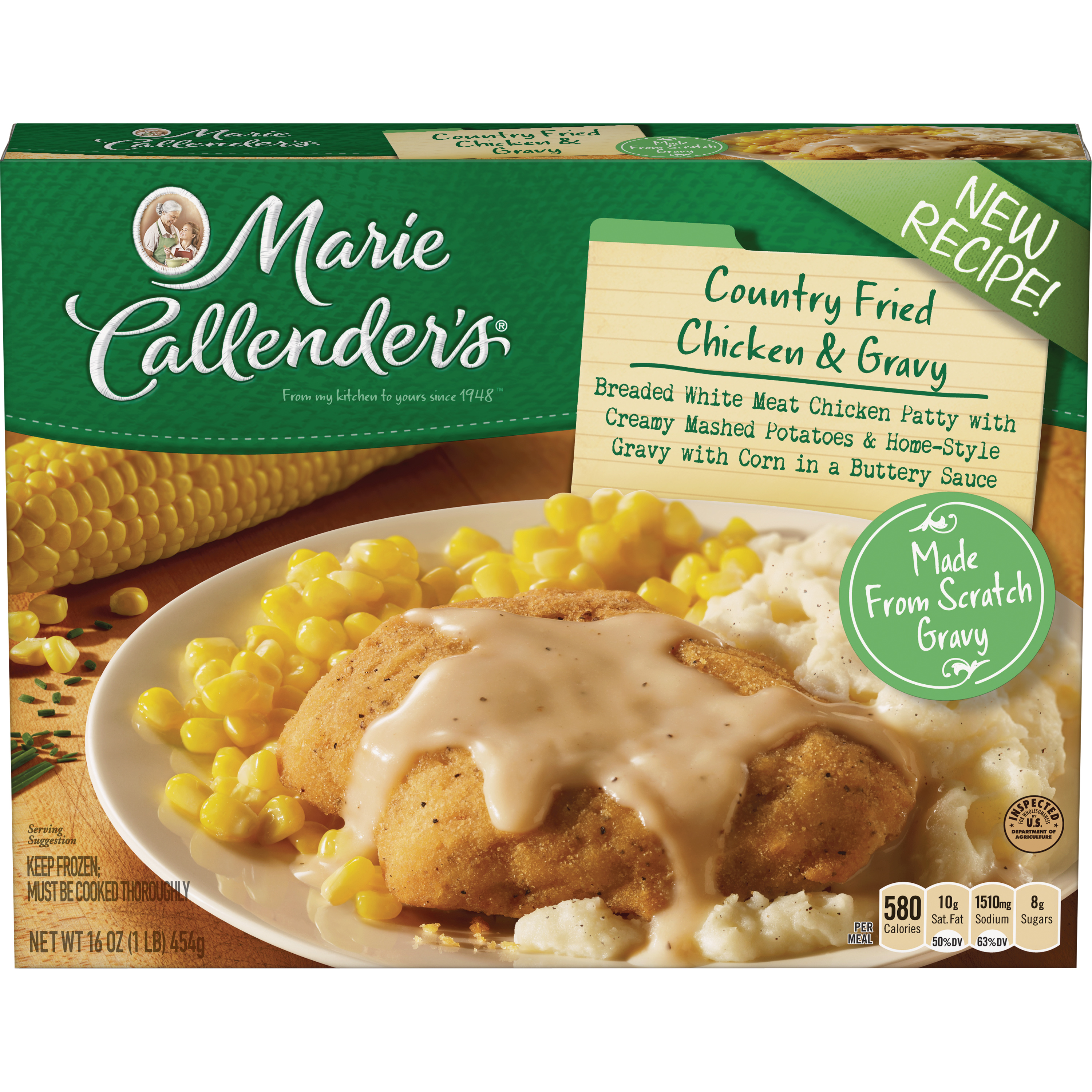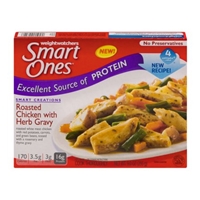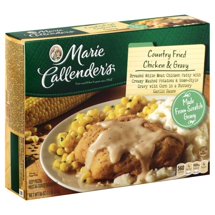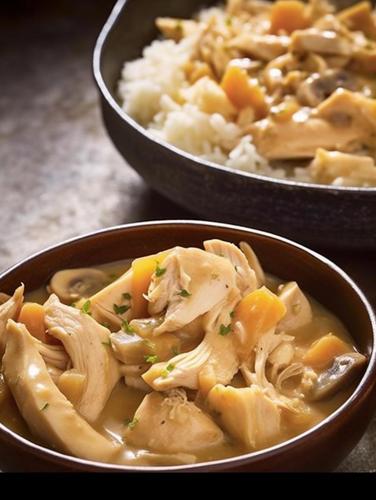Chicken And Gravy
Chicken and Gravy is a classic and comforting culinary delight that's loved by many for its hearty taste and soothing aroma. This dish is generally prepared by cooking a whole chicken or chicken pieces until tender and succulent, and then creating a thick, flavorful gravy from the chicken's cooking juices.
A versatile entrée, Chicken and Gravy can be served alongside a multitude of accompaniments, from mashed potatoes to steamed vegetables, with the gravy enhancing the flavors of each component. Balanced in both flavor and nutrition, it makes a satisfying meal for family dinners, holiday feasts or everyday lunches.
56%
CARBS
25%
FAT
19%
PROTEIN
12 Chicken And Gravy Products
Stouffer's Baked Chicken Frozen Meal
Gerber Mashed Potatoes & Gravy with Roasted Chicken, 12+ Months, Toddler
Marie Callender's Country Fried Chicken & Gravy Frozen Meal
Hormel Compleats Chicken Breast & Gravy with Mashed Potatoes
Mistica Foods Country Fried Chicken Breasts With Gravy
HORMEL SQUARE TABLE Roasted Chicken Breasts & Gravy
Marie Callender's® Country Fried Chicken & Gravy Frozen Meal
Marie Callender's Frozen Dinner, Country Fried Chicken, 16 Ounce
Roasted Chicken With Herb Gravy
MARIE CALLENDERS Country Fried Chicken And Gravy Dinners
2 Recipes for Chicken And Gravy
Chicken And Gravy FAQ
More often than not, the common problems or mistakes people make while cooking Chicken and Gravy mostly revolve around the texture of the gravy or the flavor of the chicken. Overcooking of the chicken could lead to it becoming dry and tough, whereas undercooking may risk food-borne illness. Also, achieving the perfect consistency and rich flavor for gravy can be a bit challenging; it might turn out too runny, too thick or lacking in flavor. Seasoning is very important in this dish, so don't be stingy with it. Lastly, using quality ingredients can make a huge difference; free-range chicken usually yields better taste than factory-farmed ones, and homemade stock surpasses store-bought ones in flavor any day. For the ultimate Chicken and Gravy, use fresh herbs and vegetables when possible.
Tips and tricks include browning the chicken on all sides before slow-cooking to trap in the moisture and enhance the flavor. Using a mixture of flour and butter (roux) or cornstarch slurry to thicken the gravy ensures a silky-smooth consistency. And remember, always strain your gravy for a lump-free finish.
How long should I cook the chicken to get it tender but not dry?
How do I make a thick gravy without lumps?
Why is my gravy too thin? What can I do to fix it?
My gravy tastes bland. How can I add more flavor?
Should I remove the chicken skin before cooking?
Can I use boneless chicken for this dish?
Can I use store-bought chicken stock for my gravy?
Can I make gravy ahead of time?
How can I prevent the chicken from sticking to the pan?
The chicken turns out too dry, what am I doing wrong?
Health Info
Macros
23g
CARBS
9g
FAT
8g
PROTEIN
Allowed on these diets
MEDITERRANEAN
GLUTEN FREE
Contains these allergens
MILK
WHEAT
